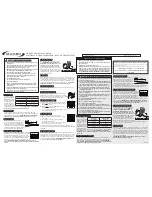
6
OPERATION MANUAL
The most common metal guillotine injuries are crushed or amputated fingers.
Most of these accidents are not caused by the blade of the guillotine, but by the clamps that hold
the sheet metal being cut. Other injuries are from fingers jamming under the sheet that is to be
cut, and strain injuries while handling large and awkward sheets of metal.
By law, guillotines must be guarded, and operators must be trained. Safe working procedures must
be developed to prevent injuries.
2.1 SAFETY REQUIREMENTS
DO NOT use this machine unless a Qualified person has instructed you in its safe use and opera-
tion of the machine.
The following topics can be used as a guide to identify workplace hazards and to reduce the risks of
operating metal guillotines.
It is an unsafe practice for two people to work at a guillotine unless both operators are provided
with interlocked actuating devices (usually a foot control). However in some guillotine operations,
for example cutting large sheets, two operators may be required to maneuver sheets into position
before cutting. For such operations safe work procedures should be developed to control any
hazards.
Safety glasses must be worn at
all times in work areas. Earmuffs
should be worn if the work area is
noisy.
Sturdy footwear must be worn at
all times in work areas.
Gloves should be worn when
handling the material used on this
machine.
Long and loose hair must be
contained with a net or under a
hat
Page 6
Instructions Manual for MG-440 (S924A)
07/02/2018







































